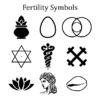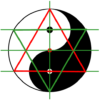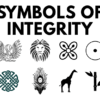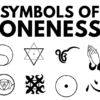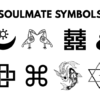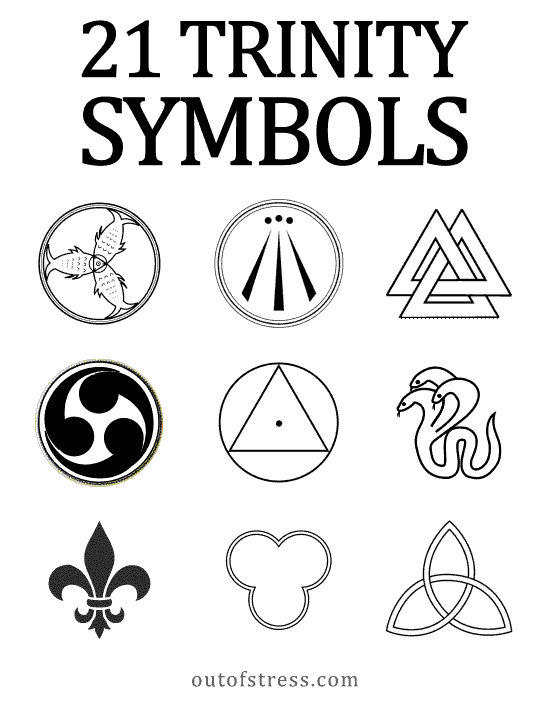
The Trinity is a Christian concept that defines God as three divine persons – the Father, the Son (Jesus Christ), and the Holy Spirit. Each of these entities is distinct yet united as one divine being.
Interestingly, this concept is not limited to Christianity but is found in various religious, spiritual, and mythological traditions around the world. For instance, in Hinduism, this concept is present as three gods and goddesses who create the physical world.
This goes to show that there is something powerful about this concept, and understanding it can help you comprehend the nature of the divine and the universe we live in. In this article, we will explore 25 ancient symbols that are based on the concept of the Trinity. We will delve into the meaning and significance of these symbols and try to decipher their hidden symbolism. So, let’s begin.
21 Trinity Symbols from Around the World
1. Three hares symbol
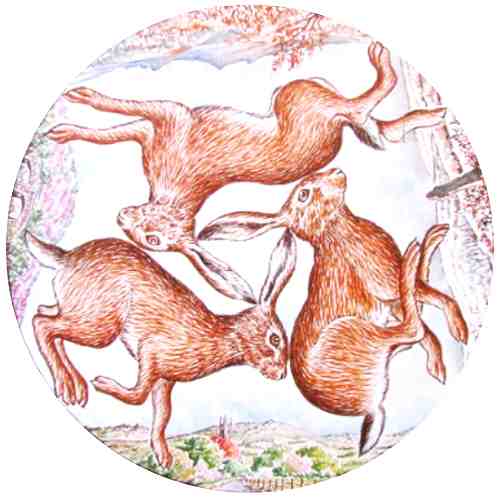
The three hares symbol, also known as the “Tinner’s Rabbits,” features three rabbits chasing each other in a circular pattern. Each rabbit appears to have two ears, but on closer inspection, you will find that they share ears, forming a triangle at the center. This intricate design symbolizes the interconnectedness and unity of the Trinity.
This symbol is found across various cultures, including Chinese, Buddhist, Islamic, Jewish, and medieval European, where it was associated with fertility, rebirth, and the sacred number three.
2. Three fishes symbol
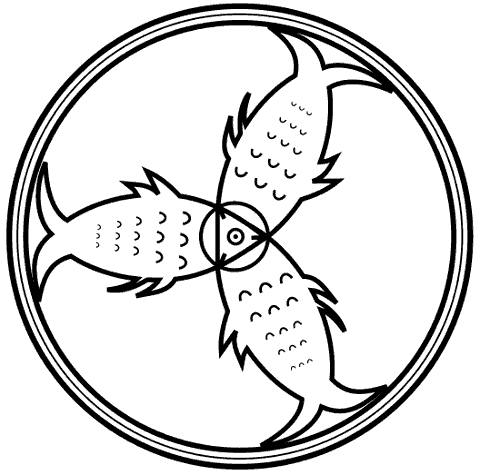
The three fishes symbol, is an ancient pagan symbol that depicts three fish intertwined in a circular pattern. The fishes are arranged in such a way that each fish forms a corner of an equilateral triangle. This symbolizes the equal and inseparable nature of the Father, Son, and Holy Spirit. This symbol is also associated with the concept of fertility and abundance.
3. Equilateral Triangle
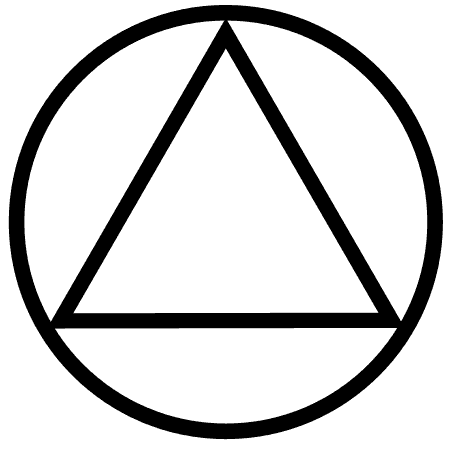
The equilateral triangle, with its three equal sides and angles, is a perfect representation of the Trinity. Each side symbolizes one of the three persons of the Godhead, while the triangle as a whole represents their unity and equality.
4. Trefoil
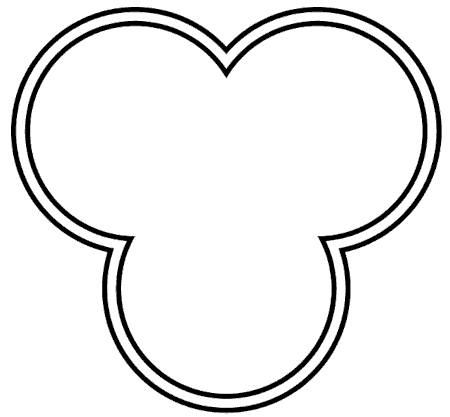
The trefoil features a three-leaved clover-like design (created using three overlapping circles). Each leaf represents one of the three persons of the Godhead, while the interconnected leaves symbolize their unity and indivisibility. The trefoil is often incorporated into religious architecture and artwork as a subtle nod to the Trinity.
5. Trident
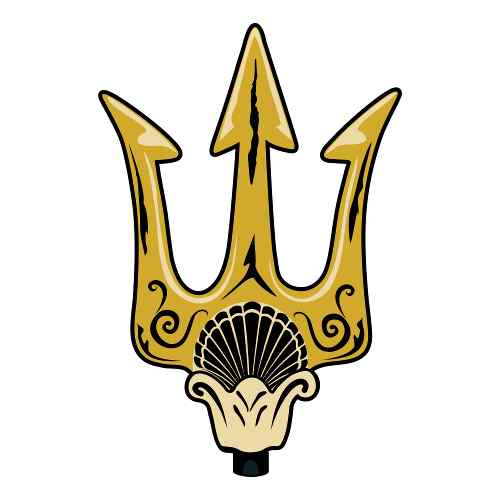
The trident, a three-pronged spear, is a powerful symbol associated with various deities across different cultures. In the context of the Trinity, the three prongs represent the Father, Son, and Holy Spirit, while the single shaft symbolizes their unity. The trident is also a symbol of power, authority, and dominion.
6. Shamrock
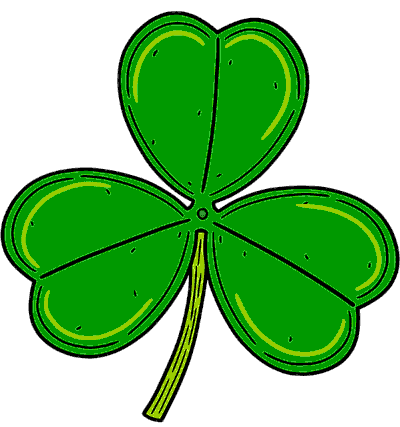
The shamrock is a three-leaved clover native to Ireland. It has long been associated with St. Patrick and the Trinity , with each leaf representing one of the three persons of the Godhead. According to legend, St. Patrick used the shamrock to explain the concept of the Trinity to the Irish people. The shamrock has since become a beloved symbol of Irish culture and Christian faith.
7. Trinity knot (Triquetra)
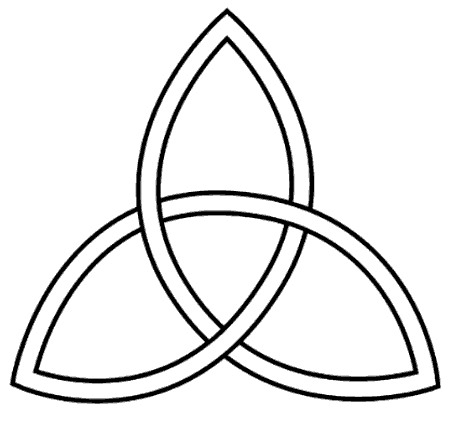
The Trinity knot, also known as the Triquetra, is a Celtic symbol featuring three interlocking circles. Each loop represents one of the three persons of the Trinity, while the continuous line symbolizes their eternal nature and indivisibility. The Trinity knot is often used in religious jewelry and artwork as a powerful reminder of the mystery and unity of the Godhead.
8. Trimurti
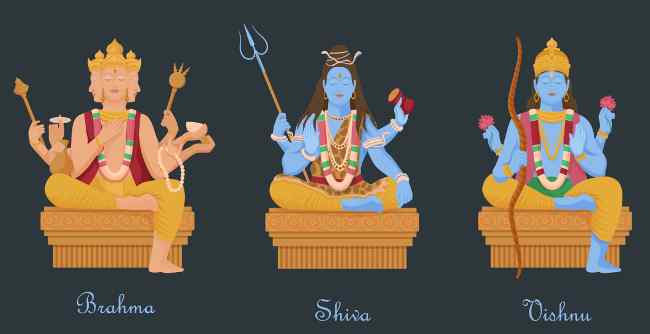
In Hinduism, the Trimurti represents the three main deities: Brahma (the Creator), Vishnu (the Preserver), and Shiva (the Destroyer). This divine triad is often depicted as three faces or figures joined together. This symbolizes the unity and interdependence of the cosmic forces they represent. The Trimurti is a powerful representation of the cyclical nature of existence and the divine powers that govern the universe.
9. Three mukhi rudraksha
The three mukhi rudraksha, a rare and highly prized seed, is believed to represent the Hindu trinity of Brahma, Vishnu, and Shiva. These seeds, which naturally grow with three faces or “mukhis,” are said to bestow the wearer with confidence, fearlessness, and spiritual growth. Thus the three mukhi rudraksha is a powerful symbol of the divine forces that shape our lives and the universe.
10. Triple goddess
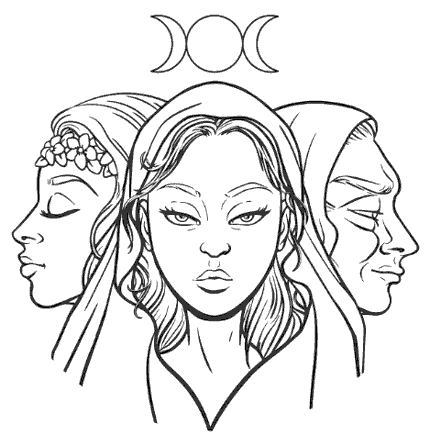
The triple goddess is a concept found in various pagan and neo-pagan traditions, representing the three stages of a woman’s life: maiden, mother, and crone. Each aspect of the triple goddess embodies different qualities and energies, such as youth, fertility, wisdom, and transformation. The triple goddess is often depicted as three women standing together or as a single figure with three faces, symbolizing the unity and cyclical nature of the divine feminine.
11. Mitsu Tomoe – Shinto Trinity symbol
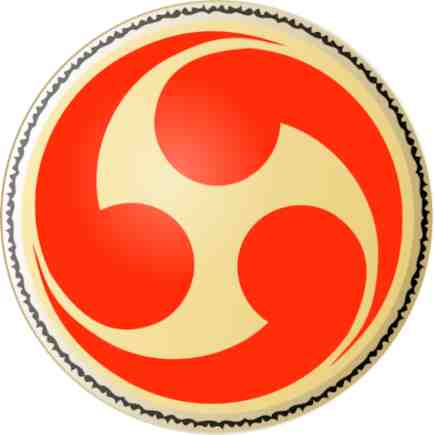
The Mitsu Tomoe, a Japanese symbol consisting of three comma-shaped figures arranged in a circular pattern, represents the Shinto trinity of heaven, earth, and humanity. Each “tomoe” symbolizes one of these realms, while the circular arrangement represents their interconnectedness and harmony. The Mitsu Tomoe is often used in Shinto art and religious objects to convey the balance and unity of the cosmic forces.
12. Valknut
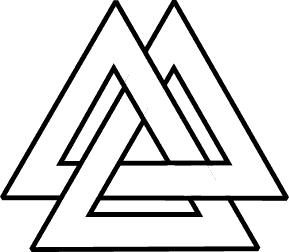
The Valknut, a Norse symbol consisting of three interlocking triangles, is believed to represent trinity as well as the power and wisdom of Odin, the chief god of the Norse pantheon. The nine points formed by the triangles are said to symbolize the nine worlds of Norse mythology, while the interlocking design represents the interconnectedness of these realms.
13. Philosopher’s stone
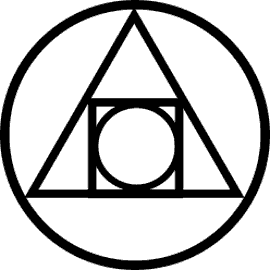
The philosopher’s stone symbol is a combination of three basic geometric shapes: a circle, a square, and a triangle. Each of these shapes represents one of the three aspects of the Trinity. The triangle is said to represent the Father, the square represents the Son, and the circle represents the Holy Spirit.
The philosopher’s stone symbol, represents the ultimate goal of alchemy: the transformation of base matter into the philosopher’s stone. The philosopher’s stone was believed to have the power to transmute lead into gold, cure diseases, and grant immortality. However, on a spiritual level, the pursuit of the philosopher’s stone symbolizes the journey towards self-realization, enlightenment, and unity with the divine.
14. Awen
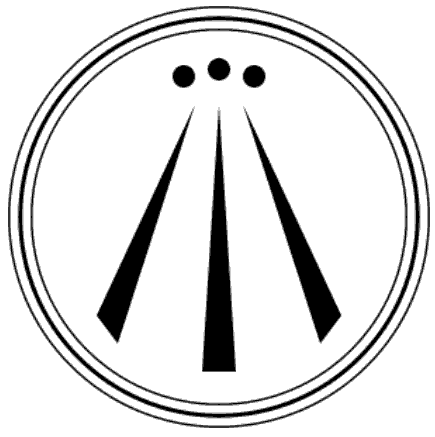
The Awe is, a Celtic symbol consisting of three rays or lines emanating from a central point. It represents the divine energy that flows from the three realms of existence: the underworld, the material world, and the heavens. Each ray symbolizes one of these realms, while the central point represents the source of all creation. The Awen is often used in Druidic and neo-pagan practices to invoke the power and wisdom of the divine trinity.
15. Fleur-de-lis
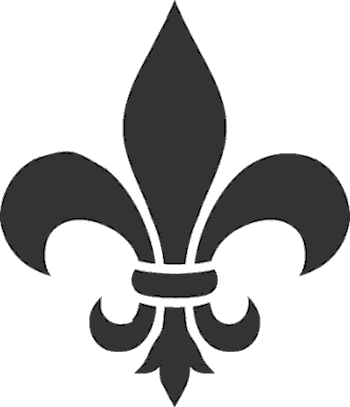
The fleur-de-lis is a stylized lily or iris flower depicted with three petals. It is often associated with the Trinity in Christian art. Each of the three petals represents one of the three persons of the Godhead, while the single stem symbolizes their unity.
The fleur-de-lis is also associated with royalty, purity, and the Virgin Mary, making it a powerful symbol of divine grace and spiritual nobility.
16. Tripundra

The Tripundra is a set of three horizontal lines drawn on the forehead in Hinduism. It represents the three aspects of the divine: creation, preservation, and destruction. Each line is made with a specific material (ash, sandalwood paste, or kumkum) and is associated with a particular deity (Brahma, Vishnu, or Shiva).
The Tripundra is a powerful symbol of devotion and surrender to the divine trinity that governs the universe.
17. Tridatu
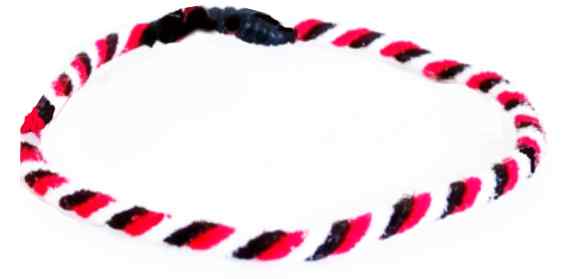
The Tridatu, a sacred thread worn by Balinese Hindus, consists of three strands of cotton or silk in white, red, and black. Each color represents one of the three deities of the Trimurti: Brahma (red), Vishnu (black), and Shiva (white). The Tridatu is believed to provide spiritual protection and remind the wearer of their connection to the divine trinity.
18. Orion’s belt
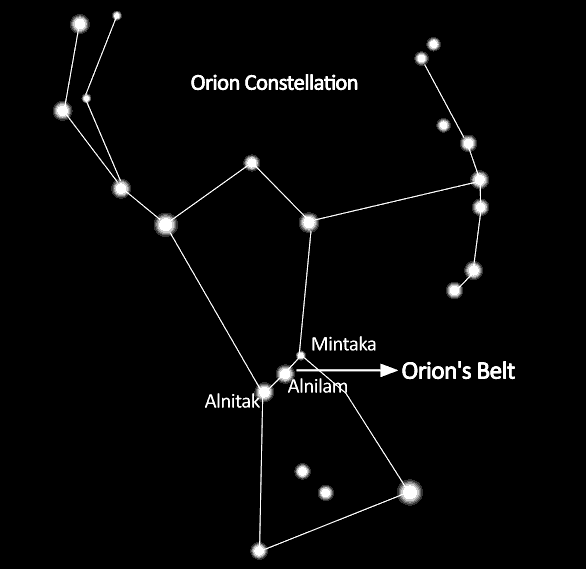
The Orion’s belt is a prominent asterism consisting of three bright stars in a straight line. It is often associated with the concept of the trinity in various mythologies and spiritual traditions. The three stars are said to represent divine beings, cosmic forces, or sacred principles that govern the universe. In some cultures, Orion’s belt is seen as a gateway to the heavens or a symbol of the soul’s journey toward enlightenment.
19. The third dimension in electromagnetic waves
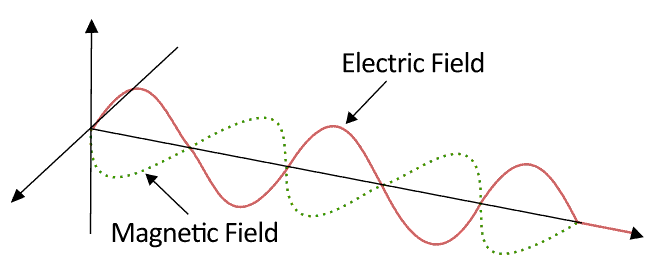
In physics, electromagnetic waves are characterized by three dimensions: electric field, magnetic field, and the direction of propagation. These three components form a trinity that governs the behavior and properties of electromagnetic radiation, such as light, radio waves, and X-rays. The third dimension, the direction of propagation, is often associated with the concept of the Holy Spirit or the divine energy that permeates the universe.
20. Three-headed snake
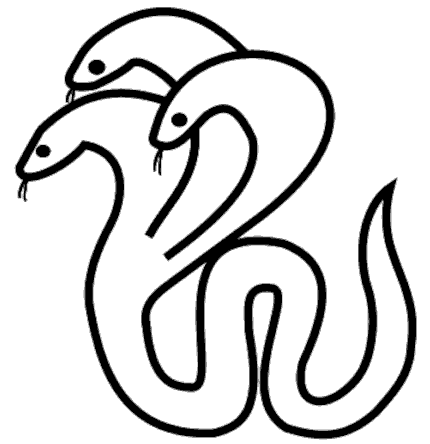
The three-headed snake is a powerful Hindu symbol. It represents the trinity of creation, preservation, and destruction. Each head symbolizes one of these aspects, while the single body represents their unity and interdependence. The three-headed snake is often associated with wisdom, power, and the cyclical nature of existence.
21. Solar cross with circle
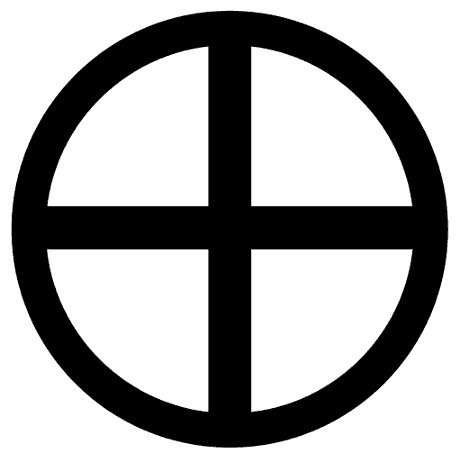
The solar cross consists of a cross made of equal lines surrounded by a circle. The cross, along with the circle, represents the concept of the Trinity. The vertical line represents the Father, the horizontal line represents the Son, and the circle represents the Holy Spirit. The solar cross is a ancient symbol that has been used in various cultures to represent the divine trinity and the unity of all creation.
Conclusion
The many symbols of the trinity discussed in this article, from old religious art to modern spiritual practices, show how people have always been interested in understanding the divine and the universe. Each symbol, whether it’s three rabbits sharing ears, a trident, or a simple shape, gives us a different way to think about the deep mystery of the trinity.
By thinking about these symbols and what they mean, we can better understand the divine and our place in the world. As we continue to search for meaning and connection in a constantly changing world, these timeless trinity symbols will keep inspiring and guiding us on our spiritual paths.


